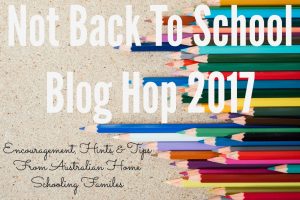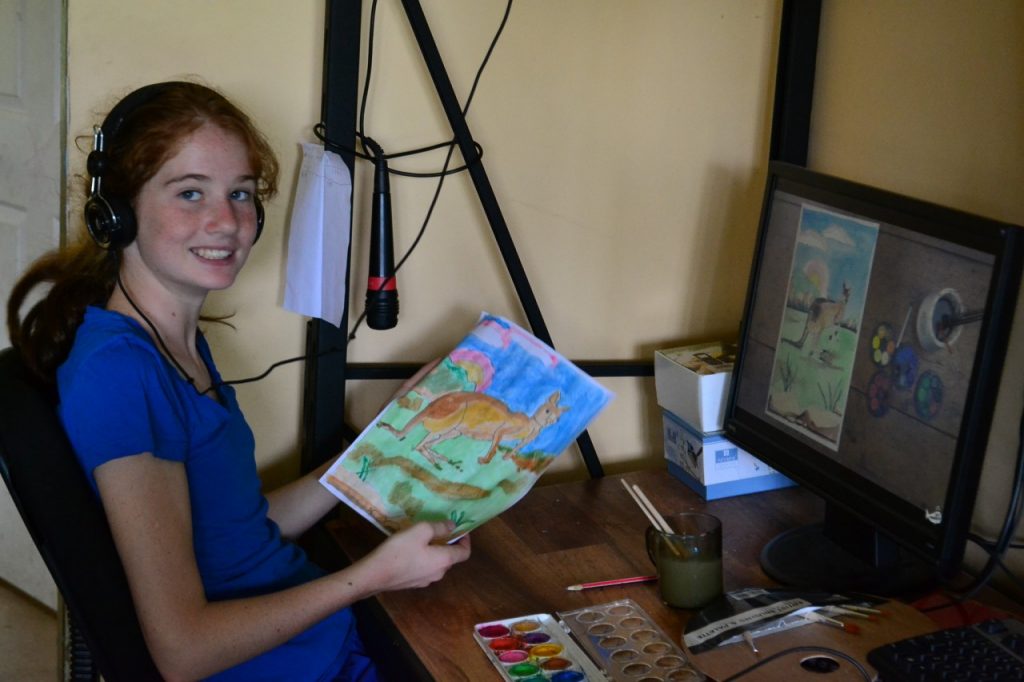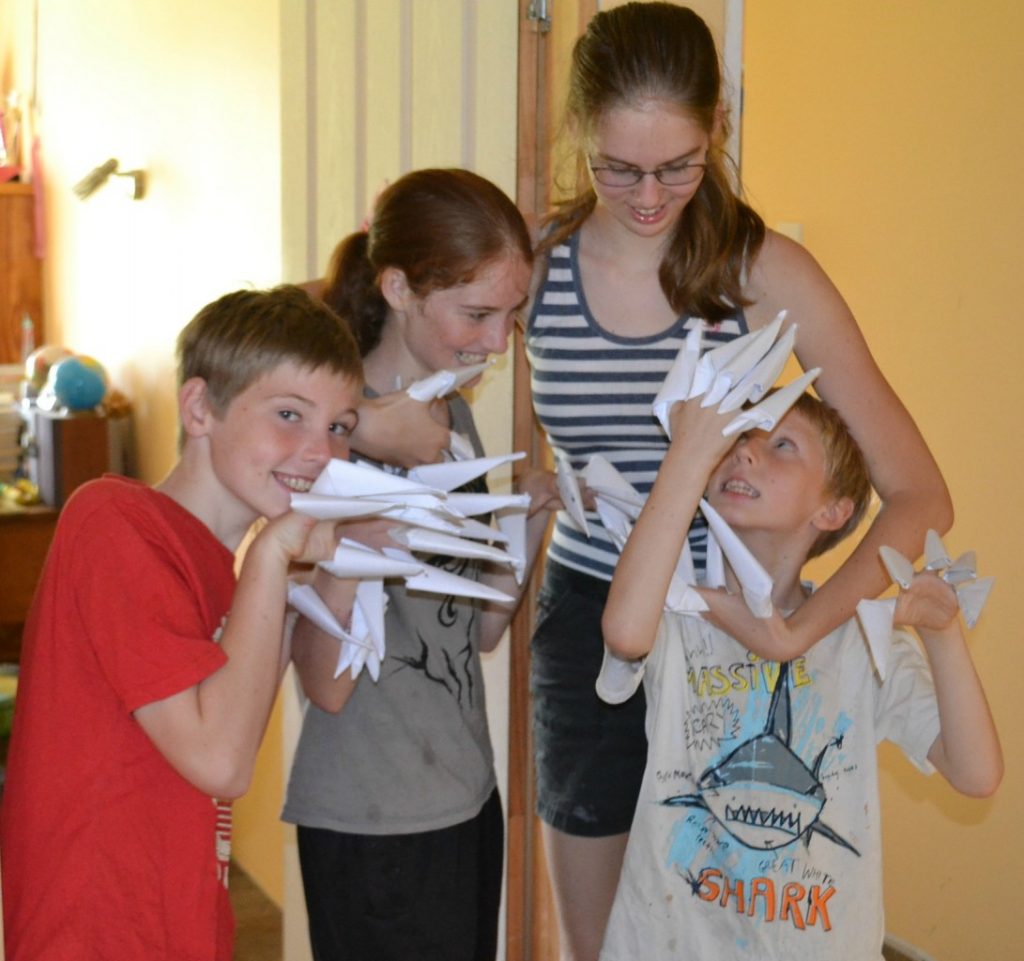
The Way We Learn
 Joining up with fellow Aussie homeschool families once again to bring to you our unique perspectives about a variety of ‘not back to school‘ topics, hosted by Kylie from Our World Wide Classroom. This week we’re chatting about ‘The Way We School,’ talking about not only our philosophies but how this looks in the reality, what our home education routine really looks like.
Joining up with fellow Aussie homeschool families once again to bring to you our unique perspectives about a variety of ‘not back to school‘ topics, hosted by Kylie from Our World Wide Classroom. This week we’re chatting about ‘The Way We School,’ talking about not only our philosophies but how this looks in the reality, what our home education routine really looks like.
We have been home educating for nearly two decades now and our Home Education Journey has undergone many changes along the way. The dreams and visions we began with have either gained clarity along the way or been abandoned. Other areas we didn’t even consider of importance have shown to be of far greater significance than we realised. We have a clearer understanding of what is essential and what isn’t through observations and trial and error. Home education isn’t a neat tidy box, it’s simply parenting 24/7 with no let up.
We began our home education journey full of enthusiasm and ideals, certain we knew the way to ‘success’ however we had some lessons to learn 😉 In the beginning we were heavily influenced by the philosophies of; Maria Montessori, John Holt (unschooling), Valerie Bent (Literature Based Unit Study) and Charlotte Mason and whilst these served us well to varying degrees of success in the early years, by the time our oldest were teenagers it was apparent we needed to be more fluid and accept further changes. We became even more eclectic and adopted other means of learning as valid, such as the occasional text book and the world of the internet. The education that our middle and younger children are receiving in some ways is vastly different to that of our older children though the influence of those early mentors still continues today.
What has become extremely clear over the past two decades is that the earlier years are about laying foundations and the high school years are a time to find and encourage passions. Whilst our children learn from a variety of methods and each have their own unique learning styles we are a reading family and much of our learning stems from a rich literature base. Our family culture is apparent with books abounding in our home where someone can always be found reading.
How does this all translate to reality, what does an an actual day, week, term look like? Over the years our routine has undergone many changes to accommodate new babies, new ‘students’, growing children, graduating ‘students’, dynamics and logistics are forever shifting. Our routine February 2017 isn’t how its always looked, nor necessarily how it will continue to look. Though there is a certain framework that doesn’t change, our learning each day always includes ‘seatwork’ and a couple of reading basket sessions.
Our intent is to gather together by 8 am each day to pray and sing hymns, currently we’re finding it works best for us to begin our days with ‘seatwork’ first, that is the fundamentals; maths, reading, writing and spelling with the dependent learners. Our independent learners have more freedom to choose when they achieve their studies promoting skills in time management. However for any studies that need to be undertaken with Mum they have to work around my routine, this has at times been a source of frustration for the children but a necessity with the logistics of educating a large family of a wide age spread. Each of the children have a printed weekly excel sheet, what we call our ‘expectation’ sheets, that indicate what each child needs to achieve academically by weeks end. When we began home education I considered this a rather ‘schoolie’ approach however considering the reality of our family dynamics today it a logistical necessity.
After seatwork with the dependent learners I then turn my attention to our independent learners whilst the younger children undertake what studies they can manage without me, generally computer based learning with Artventure and Mathsonline. My seatwork with the independent learners mostly consists of an All About Spelling lesson and touching base to see if they need assistance in any other areas of their studies. Whilst I had been working with the younger children the older children were working on their maths, writing, faith studies, history, science, geography etc. My goal is to complete all our seatwork by 10:30am to then begin our Reading Basket sessions.
Our Reading Basket time is divided into two sessions, one for the younger children another for the teenagers, our newly minted Grade 7er joins in with both ’cause she can 🙂 Our Reading Basket for the youngers includes; a Saints chapter book, Aesop’s Fables, books for their subject study, currently Dinosaurs and a literature novel. For the older group we have a saints novel, a literature novel and our apologetics book. This time together creates the most precious times together, it is when the children absorb ideas and concepts, make connections, and it brings forth incredible conversations in which they question and share their hearts. On average the Reading Basket times can take about 1.5 hr per group and this is where I struggle to fit it all in and still haven’t found the solution. My ideal is to finish all studies that involved me before lunch around 1pm, by then I’ve been working 5 hours without a break and frankly I’m exhausted. However to fit in 3 hours of Reading Basket before lunch isn’t quite manageable either. It’s a constant juggle to fit in the needs of both the younger and older children and yet so important. Whilst the need for the youngers is more academic, I’m also determined to meet the needs of the older children, the precious conversations bought forth by this time together highlights the importance for them. My latest idea is to trial alternate days of focusing on each group, Mondays I work only with the younger set, Tuesdays with the teens, currently brainstorming ideas for project based learning ideas the younger set could do independently on their ‘off’ days.
Regarding subject studies; science, history, geography, commerce etc we’ve found that our children learn better when we have more time, time to delve deeper, to not be feeling as if we are constantly rushing from subject to subject. Therefore we look at the big picture, consider subjects from a yearly perspective and focus mainly on one subject per term, particularly for the younger set. This Term the younger children are studying science, specifically Dinosaurs. Whilst our highschoolers are studying in a few more disciplines they have each chosen their preferred focus area to delve deeper into. Princess(15) loves Geography and is studying Asia, Jelly Bean(12) is focusing on History specifically Ancient Britain. As we are a literature based family, alongside their core studies they have been provided with a selection of living books on these topics to bring life to their studies. This reading is never contained to only ‘learning time’, the children are often to be found with living books in hand any time and day of the week.
After lunch the younger children have free time on the computer, the teens have their computer time after tea. Then it’s off to afternoon activities, this term it translates to me chauffeuring children 4 afternoons a week to swim lessons, swim squad and dance lessons. Not all children have to come in each afternoon as there is always at least one adult/teen ‘child’ to babysit and cook tea, in some respects life is easier these days.
Always fluid, always changing, never tidy.
How about you, what are your philosophies and how does this look in the reality?
Feel free to join in the Aussie ‘not back to school’ blog hop.
Read our past Not Back To School blog hops.
Other Posts in Series This Year:








6 Comments
Kirstee @ This Whole Home
My grade7er joins in both because she can.
Love this!
No matter how things have changed over the years, whatever you have done has worked when they clearly love learning so much x
Erin
Kirstee,
I hadn’t even thought deeply about this until you bought it to my attention, it just is. You’re right it is something to celebrate 🙂
Sherelle
I love how the older children have their own printout of subject expectations for the week. Great idea for flexibility. (Unless of course they’re procrastinators!)
I have two children who attend school, and homeschool the younger three, so I tend to read aloud in the evenings after dinner, when everyone is cleaning up, as well as during the day to the homeschoolers. Spreads the load a little bit.
Erin
Sherelle
All the children have a printout, even the three your old insists on one lol. Actually the younger ones are better at filling in than the teenage boy, doesn’t mean he hasn’t done, just not ticked, teen boys aren’t keen on ticking off 😉
Just love how you’re reading of an evening, this way your school kids can still hear read alouds 🙂
Amy
“Always fluid, always changing, never tidy”
I can so relate to that!
Erin
Oh yes, I’m certain no two years have ever been the same, not sure I could even say terms stay the same. It’s a wild ride for sure.